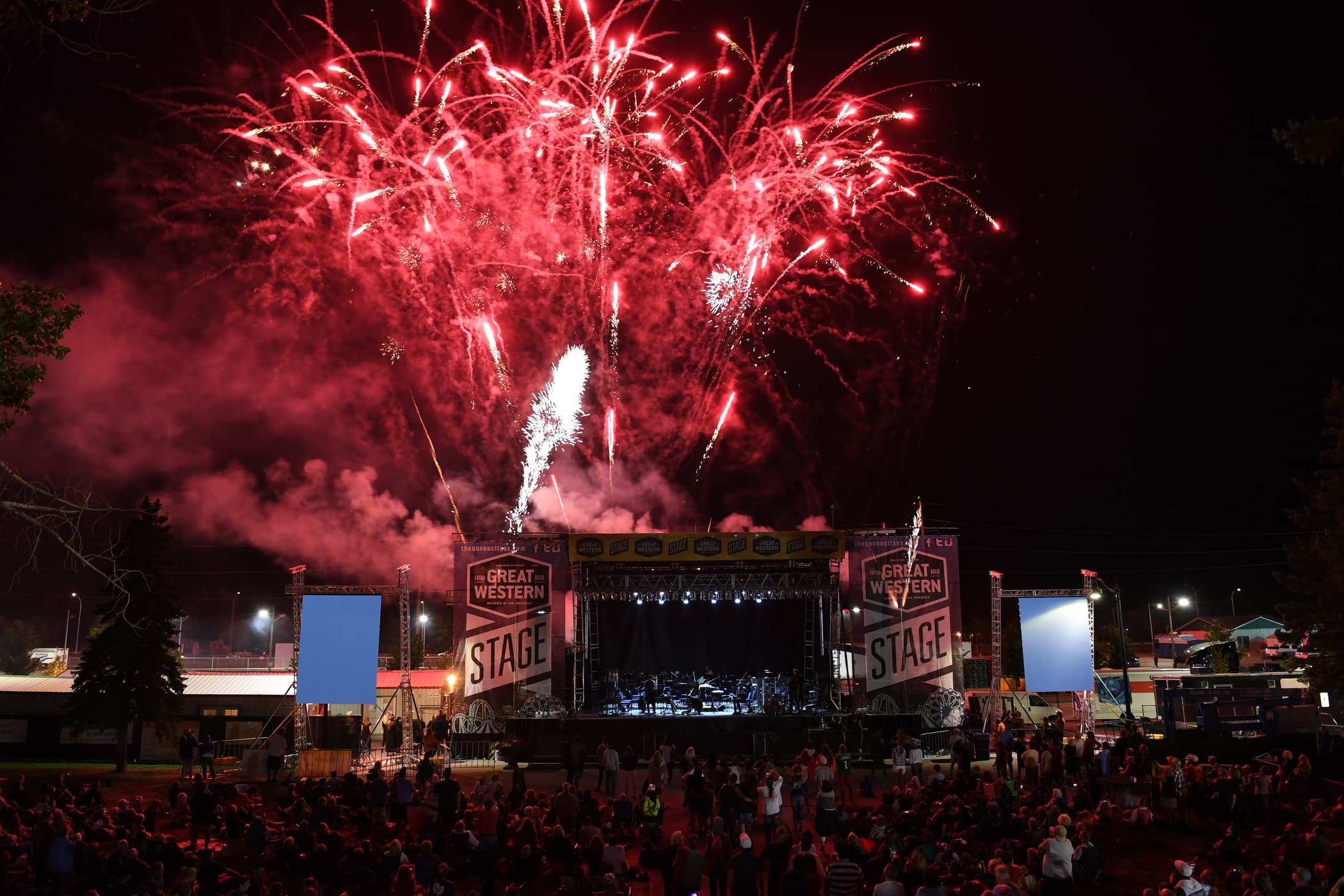
field report
Transforming a Tradition
Learn how the team at Evraz Place partnered with Ascent to remagine the experience of one of North America’s longest-running fairs for a modern audience using the principles of human-centered design.
contributors
Jeff Boutilier, James Spaleta
client
Regina Exhibition Association Ltd. (REAL)
project
QCX
Few entertainment properties have the broad appeal of a fair. To succeed, the team would need to craft a formula for the QCX that would appeal to a huge diversity of audiences while staying true to the identity it had worked hard to develop over its history. They were going to have to walk a lot of miles in a lot of different shoes.
Every summer, cities across North America are transformed by the arrival of the annual fair. The sights and sounds are unmistakable: the lights of Midway, the mechanical symphony of rides and attractions, and the wafting smells of deep-fried everything. One sight in particular, however, has been changing worryingly each time the trailers pull into town – the crowds. Despite efforts to stay relevant to an ever-changing audience, attendance was fading faster than the paint on a ride logging big miles on a non-stop nation-wide tour.
As old as the City itself, Regina’s Queen City Exhibition (QCX) is one of North America’s longest-running fairs and is a cultural touchstone in the region. For decades generations of Saskatchewan fair-goers spent their summers dreaming of a stop at the top of the ferris wheel; now the exhibition experience was struggling to find traction with modern audiences. Regina Exhibition Association Ltd. (Evraz Place), the longtime showrunner of the QCX had made significant investments to improve the visitor experience and attract new audiences, but the right formula proved elusive. In 2018, the QCX experienced its lowest attendance in 35 years.
The team at Regina Exhibition Association Ltd., along with a group of motivated stakeholders and community partners, was faced with a decision: accept that the fair simply couldn’t compete as it once did in a growing library of entertainment options or choose to defy the trends and invest in a new vision for the QCX experience.
Few entertainment properties have the broad appeal of a fair. To succeed, the team would need to craft a formula for the QCX that would appeal to a huge diversity of audiences while staying true to the identity it had worked hard to develop over its history. They were going to have to walk a lot of miles in a lot of different shoes, and they wanted a partner who could help them do it. Ascent arrived with a mandate to help QCX generate new ideas, revisit old ones, and shape them into a guest experience that would generate increased revenues and attendance the next time the trucks rolled in.
Within three years, the QCX expected to be setting another kind of record: the highest top-line and highest attendance in the 100+ year history of the exhibition.

image credit
Regina Exhibition Association Ltd. (REAL)
Whenever something is as important to a community as the QCX, people spend a lot of time thinking about it. There was no shortage of reports, economic impact studies, visitor surveys, and stakeholder perspectives to examine. Most pointed to a similar conclusion: fairs everywhere were feeling the impact of profound changes in consumer behaviour and increased competition in the events and entertainment space. The question was clear: how does the QCX need to change to stay relevant? Previous efforts, however, were short on answers.
With a clear understanding of the current situation and the history of how we got here in-hand, our team set out to systematically analyze the QCX’s current strategy in search of insights. Promising leads emerged: the fair, previously operated under an agriculture/prairie-culture theme branded as “Buffalo Days” was perceived to have lost its sense of a clear identity; it had attracted – unfairly – perceptions of being unsafe; and its connections to the broader community had weakened. Where exhibition week had once transformed the city from downtown window-paintings to parades and fireworks, the current manifestation of the QCX was more compartmentalized and limited to the Regina Exhibition Association Ltd. grounds.
While these insights shed light on how attitudes towards the QCX had evolved, they were only skin-deep. The real question of why audiences were shrinking remained.
A blueprint for the future had emerged. Over the next three years, QCX would introduce a series of changes that would transform the visitor experience.

The centerpiece of Ascent’s approach to the QCX challenge was a summit – a rare opportunity for the exhibition’s major players from across North American to come together in a coordinated effort to imagine the future of fair and, most importantly, to challenge the conventional wisdom that had contributed to the event’s progressive decline in attendance. Ascent would lead the summit participants through a series of exercises engineered to liberate their thinking and engage their creative potential. Like many groups we work with, we were greeted with a degree of skepticism. It’s a popular view that real innovation is a bit like a lightning strike – rare and unpredictable. We reject that view and believe instead that innovation is a learned and practiced process that can be harnessed within an organization to produce high-impact outcomes. Over the course of progressive explorations, the group’s initial hesitation was replaced with a palpable excitement – the process yielded a volume and quality of ideas for the future of the QCX that set a new high-water mark for our process.
The second half of the summit challenged participants to congregate the imposing inventory of ideas into a series of actionable concepts for the future of the QCX that could be tested against various consumer archetypes. This introduced the participants to their second big challenge: putting themselves in the shoes of an array of potential fair-goers to understand how they would perceive and react to various ideas. The staggering diversity of visitors made this a difficult task – consider the challenge of a middle-aged man trying to imagine the experience of a college-aged woman, or a lifelong Canadian contemplating the experience of a recently-landed immigrant.
Guiding the group through a series of intellectual exercises designed to modify their default thinking patterns began to allow the group to – if only for a moment – realize a more profound, empathetic understanding of the circumstances of very different communities of fair-goers in order to make better decisions about how potential changes to the QCX would shape their consumer behaviours.
A blueprint for the future had emerged. Over the next three years, QCX would introduce a series of changes that would transform the visitor experience. The team at Regina Exhibition Association Ltd. believed in the vision and made a significant investment to bring it to life.

image credit
Regina Exhibition Association Ltd. (REAL)
As the trucks rolled into town for the 2019 fair, they found themselves in a familiar yet different landscape. The traditional Midway, carnival games, and shows were joined by major new attractions. A high-profile professional rodeo and theme day brought back some of the “Buffalo Days” spirit that many had missed, while the introduction of a competitive E-Sports tournament saw the arrival of a new demographic of fair-goers. Significant investments in grandstand entertainment transformed every night into a raucous concert crowd that lasted late into the evening. Organizers were encouraged, but eagerly anticipated the arrival of attendance reports to gauge their success.
When the results came in, even the most optimistic projections were shattered. Not only had the fair reversed the declining attendance trend, they turned the corner and stepped on the accelerator. 2019 – the first year of an ambitious three-year reimagining of the QCX – yielded the strongest attendance in 35 years. In fact, Thursday night – an evening that featured an innovative partnership with the Saskatchewan Roughrider Football Club – saw the highest single-day attendance in the 107-year history of the fair.
With a stretch-goal of displacing friendly rival city Saskatoon as the largest fair in Saskatchewan within three years, the QCX had big ambitions for the impact of their new vision. Considering they beat Saskatoon by a staggering 20,000 visitors in just the first year of their new direction, it’s probably time they start to aim even higher.

Jeffrey Boutilier
President & Chief Strategist
Ascent was founded on Jeff’s desire to challenge people to dig deeper into their environment and themselves to reveal the insights that light the path to market success. Driven by a passion for adventure, he prefers to seek out inspiration and ideas in the places others are afraid to look.

James Spaleta
Analyst
James observes the world through the eyes of a scientist; and brings an insatiable desire to understand the complexity and nuance that shape our world to Ascent. From mechanics to botany, James’ creativity draws inspiration from his exotic collection of passions.